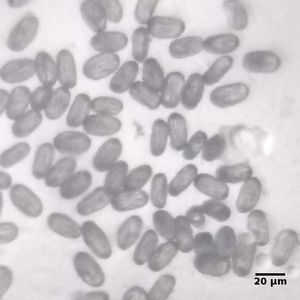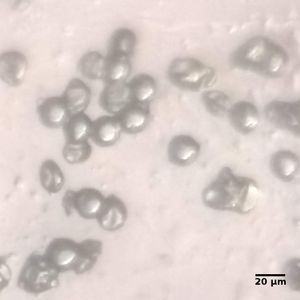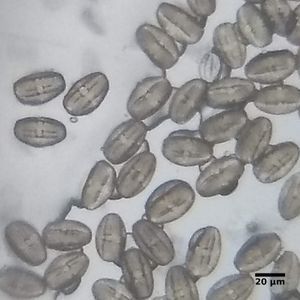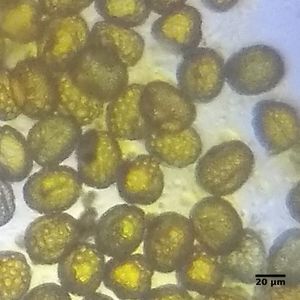Monocot pollen
 Jun 13, 2018 • 10:18 AM UTC
Jun 13, 2018 • 10:18 AM UTC Unknown Location
Unknown Location 140x Magnification
140x Magnification Microorganisms
Microorganisms
varuni
Learn about the author...
21posts
22comments
1locations
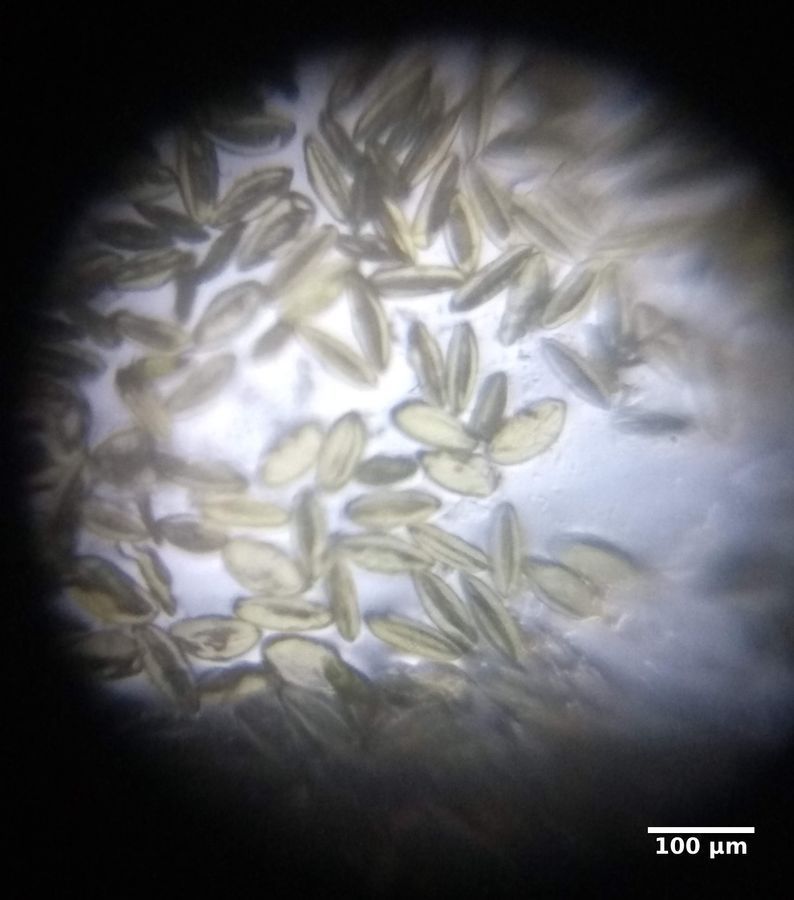
A couple of weeks ago I visited a farm in Guduvanchery on the outskirts of Chennai for a Hindustani concert. But I arrived a bit early.

So I took a walk, and everything around seemed to be flowering and I am, now, of course always, equipped with a (finite) number of small packets to collect flowers and/or pollen but… there was too much to choose from! So I decided to try to stick to monocot flowers this time.
Monocots make up a major linage of flowering plants or Angiosperms . Monocots are easily identified by parallel veins in their leaves and flower parts in multiples of 3s.
I used up all the sample bags I had with monocot flowers and I ended up coming home with all this:
Monocots make up a major linage of flowering plants or Angiosperms . Monocots are easily identified by parallel veins in their leaves and flower parts in multiples of 3s.
I used up all the sample bags I had with monocot flowers and I ended up coming home with all this:
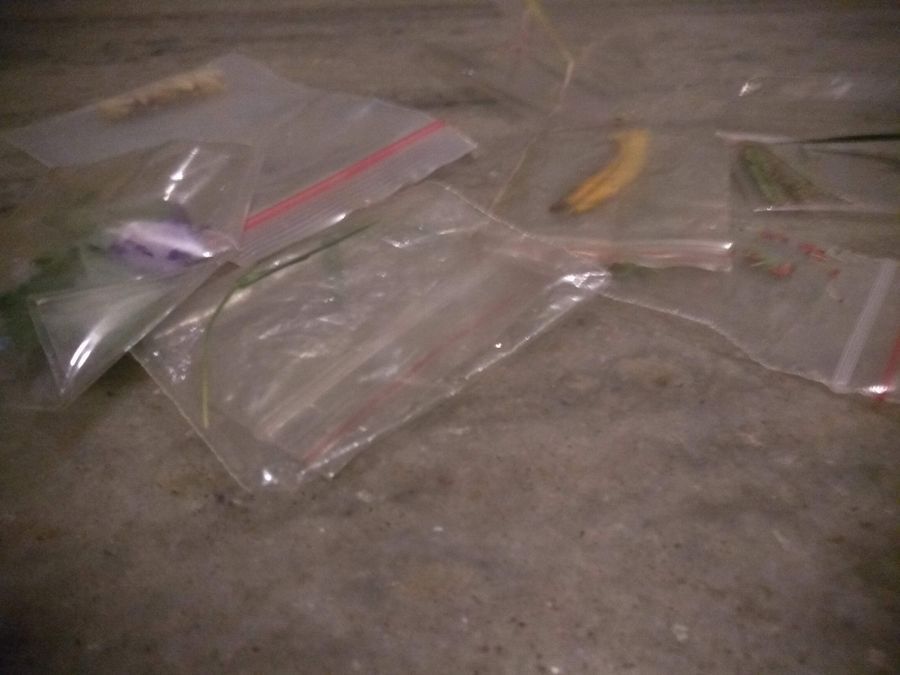
I needed a bit of help recalling where monocots fall in the phylogeny of things. So I had to look it up. Here’s a (simplified) phylogenetic tree:

(*There are a couple of different variations of this — as in the case of most phylogeny stories, there is still a much detail and debate. You can find more references of Angiosperm phylogeny on APweb and tol .)
In addition to parallel venation and flower parts in 3, monocots have irregularly distributed vascular bundles. (Maybe I’ll look into this in a future post?)
Anyway, getting back to pollen, you may remember from one of my earlier posts , I learnt about the elongated furrows on the pollen coat called colpi (singular: colpus). These allow pollen grains to shrink and swell in response to moisture with out totally desiccating or bursting. Eudicots ( most flowering plants) have pollen with 3 colpi (or some evolutionary derivative of it) and because of this conserved evolutionary trait, the members of this clade are often called Tricolpates after their pollen.
In contrast, monoctos have uniaperturate (single colpus or pore) pollen, a trait that is ancestral and shared with the more basal members of the angiosperm phylogeny.
Armed with these facts, I was curious to see how different monocot pollen look.
Here’s a strange looking flower — I collected a couple of the fleshy sticky claw shaped things that I thought were stamens:
In addition to parallel venation and flower parts in 3, monocots have irregularly distributed vascular bundles. (Maybe I’ll look into this in a future post?)
Anyway, getting back to pollen, you may remember from one of my earlier posts , I learnt about the elongated furrows on the pollen coat called colpi (singular: colpus). These allow pollen grains to shrink and swell in response to moisture with out totally desiccating or bursting. Eudicots ( most flowering plants) have pollen with 3 colpi (or some evolutionary derivative of it) and because of this conserved evolutionary trait, the members of this clade are often called Tricolpates after their pollen.
In contrast, monoctos have uniaperturate (single colpus or pore) pollen, a trait that is ancestral and shared with the more basal members of the angiosperm phylogeny.
Armed with these facts, I was curious to see how different monocot pollen look.
Here’s a strange looking flower — I collected a couple of the fleshy sticky claw shaped things that I thought were stamens:
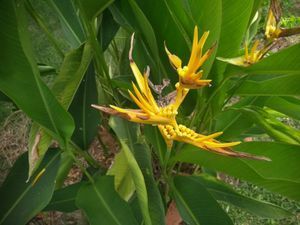
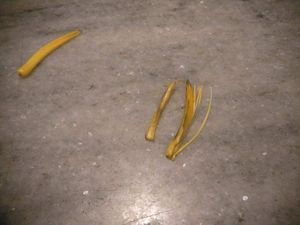
This is one of the Heliconia species. It turned out that these fleshy things really florets! You can see one open here with the style and anthers (if you look closely, you can see 3 anthers).
Here is the pollen on the anther (left) and free (right):
Here is the pollen on the anther (left) and free (right):
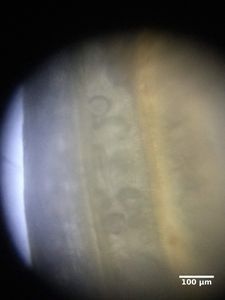
The pollen size is somewhat variable in size but generally around 50 microns in diameter. The sticky florets, flat anthers and pollen really reminded me of my tryst with the Banana flower (also, the leaves of the plant are pretty similar to Banana leaves — just smaller). After a bit of digging around, I found that Heliconiaceae is indeed part of the mononcot group Zingiberanae which also contains Banana!
Just next to these Heliconiaceae was this common ornamental plant:
Just next to these Heliconiaceae was this common ornamental plant:
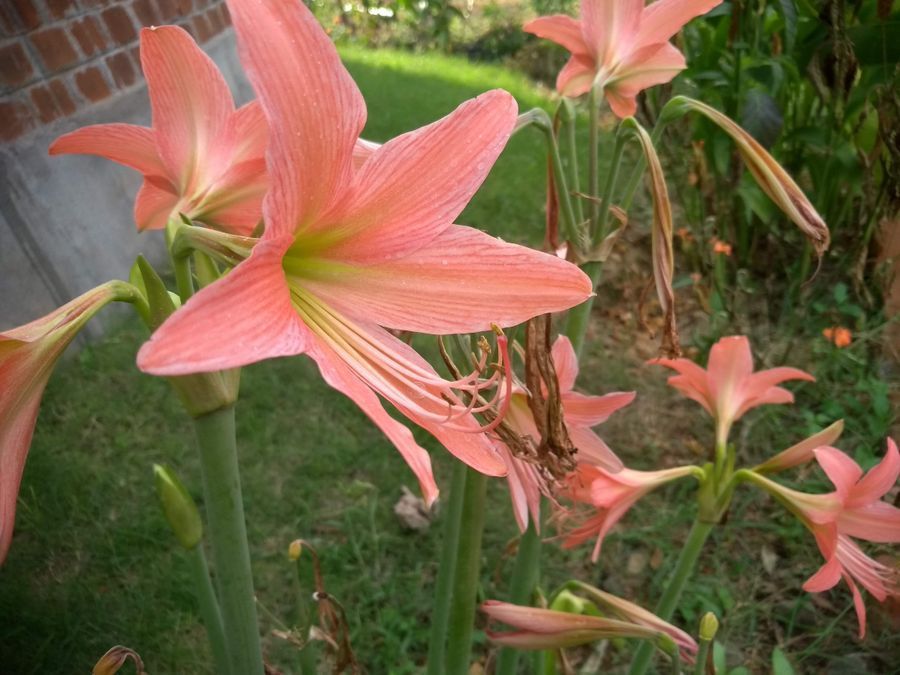
Easter lily
(Note the 6 petals and 6 anthers…)
Despite their common name, Easter lilies are not very closely related to actual lilies or Liliales . In fact, it’s scientific name seems to be under some controversy: they are either the South African Amaryllis or the South American Hippeastrum . Currently, botanists think that both of these are part of the Amaryllidinae subtribe under Asparagales .
Anyway, phylogeny and controversy aside, here’s their pollen laden anthers:
(Note the 6 petals and 6 anthers…)
Despite their common name, Easter lilies are not very closely related to actual lilies or Liliales . In fact, it’s scientific name seems to be under some controversy: they are either the South African Amaryllis or the South American Hippeastrum . Currently, botanists think that both of these are part of the Amaryllidinae subtribe under Asparagales .
Anyway, phylogeny and controversy aside, here’s their pollen laden anthers:
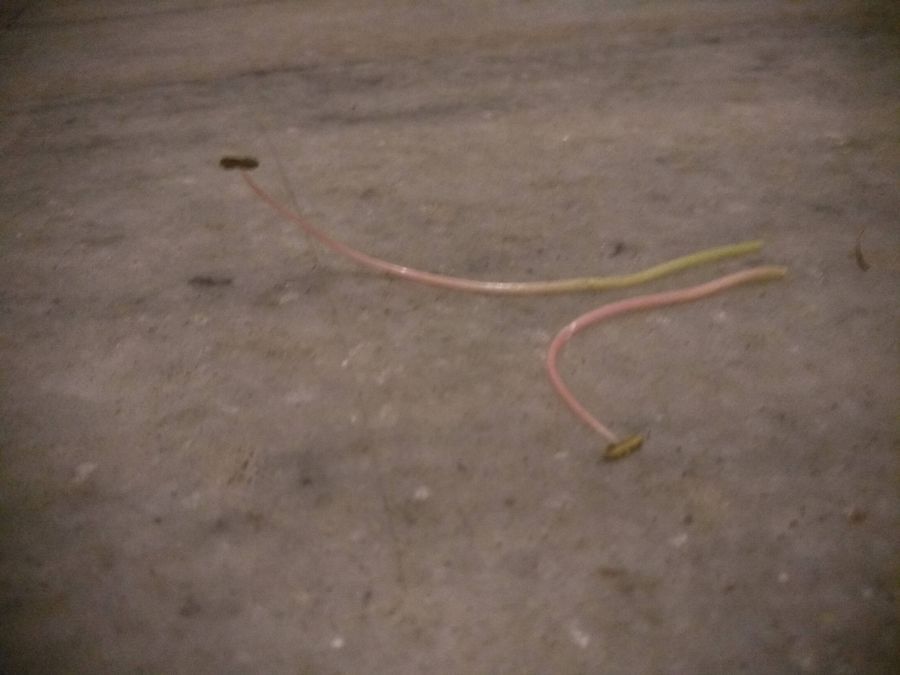
And its abundant pollen:

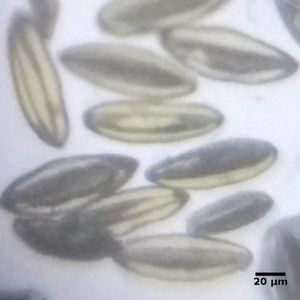
They are about 90 microns long and 40 microns wide. You can clearly see the single colpus.
There were also many grasses flowering:
There were also many grasses flowering:
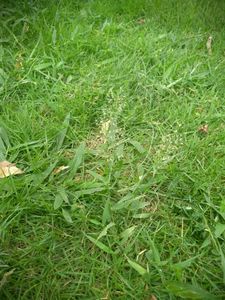
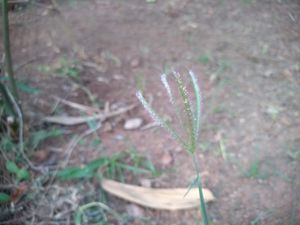
The florets look brilliant under the Foldscope!
Here is first grass’ florets:
Here is first grass’ florets:
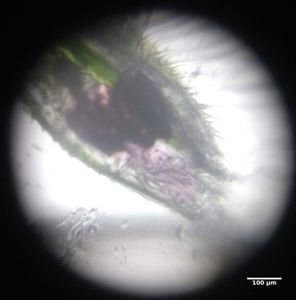
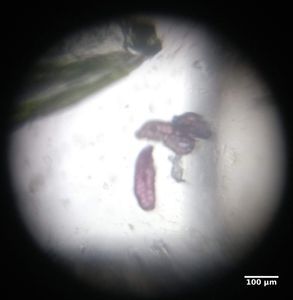
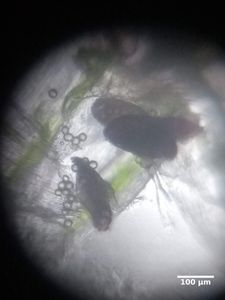
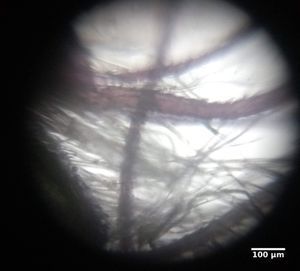
The purple grain shaped things are the anthers (in sets of 3). In the 3rd image, you can see some pollen coming off it. The prupleish bristly sort of thing in the 4th image is the stigma
Here’s the other grass’ floret:
Here’s the other grass’ floret:
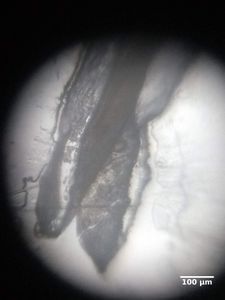
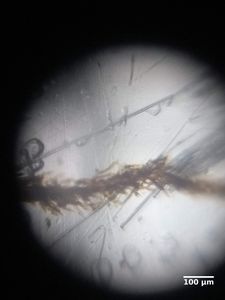
The brown bottle brush thing is the stigma.
Grasses are part of a large family of monocots called Poaceae which include many cereals we eat as well as large plants like bamboo. I read up more about grass flowers and they are fascinatingly diverse — worthy of their own post! (I’ll find more flowering grasses and post soon…)
No farm in this part of the world is compete without a coconut tree:
Grasses are part of a large family of monocots called Poaceae which include many cereals we eat as well as large plants like bamboo. I read up more about grass flowers and they are fascinatingly diverse — worthy of their own post! (I’ll find more flowering grasses and post soon…)
No farm in this part of the world is compete without a coconut tree:
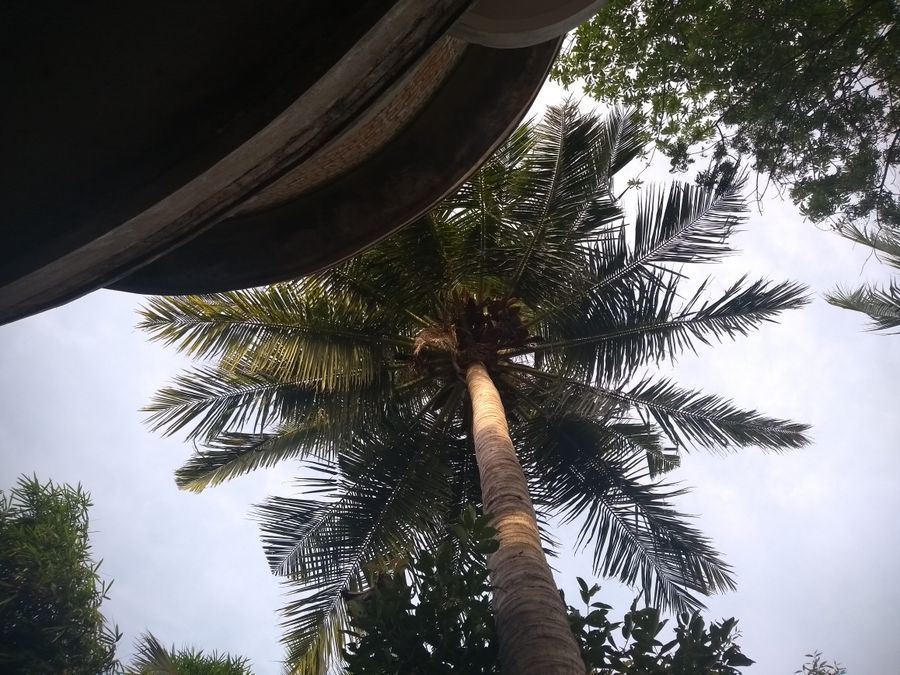
( Cocos nucifera )
Here are its tiny flowers and their pollen:
Here are its tiny flowers and their pollen:
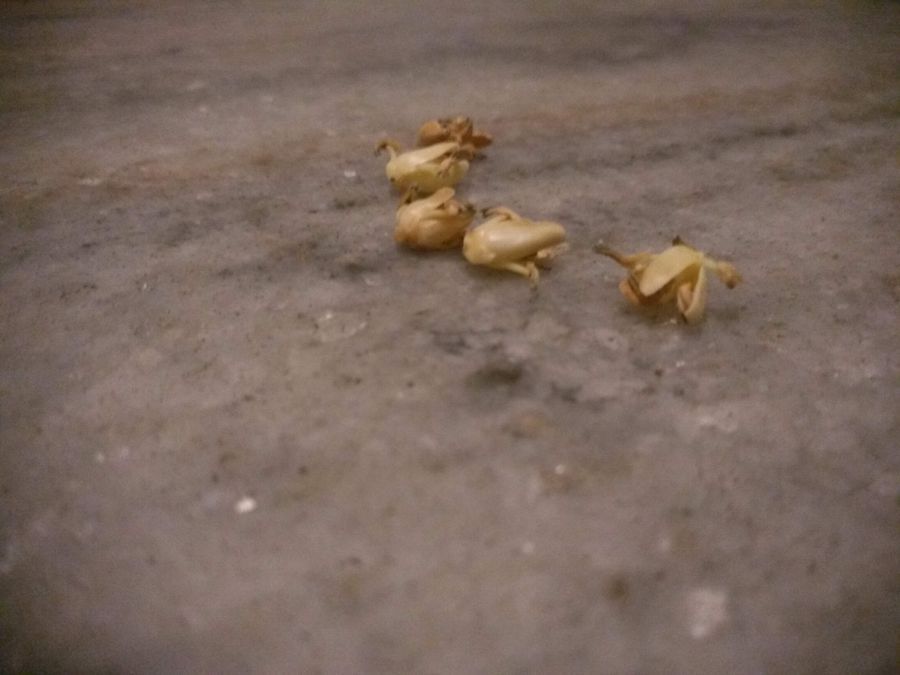
(Notice 3 waxy brown petals in each flower.)
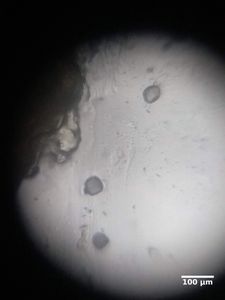
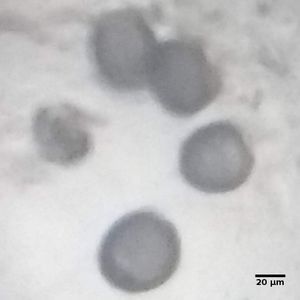
The pollen is about 55 microns in diameter.
Coconuts are part of the palm family or Arecaceae . This family is easily recognizable and abundant in the tropics. (Palms pollen post coming soon…)
For reference, all these monocots span ~120 million years of evolution!!
Just as in Theodosius Dobzhansky ‘s essay: Nothing in Biology Makes Sense Except in the Light of Evolution .
(Check out a full list of pollen I’ve looked at here .)
Coconuts are part of the palm family or Arecaceae . This family is easily recognizable and abundant in the tropics. (Palms pollen post coming soon…)
For reference, all these monocots span ~120 million years of evolution!!
Just as in Theodosius Dobzhansky ‘s essay: Nothing in Biology Makes Sense Except in the Light of Evolution .
(Check out a full list of pollen I’ve looked at here .)
Sign in to commentNobody has commented yet... Share your thoughts with the author and start the discussion!
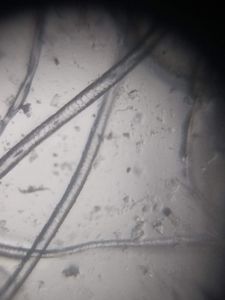
 0 Applause
0 Applause 0 Comments
0 Comments
